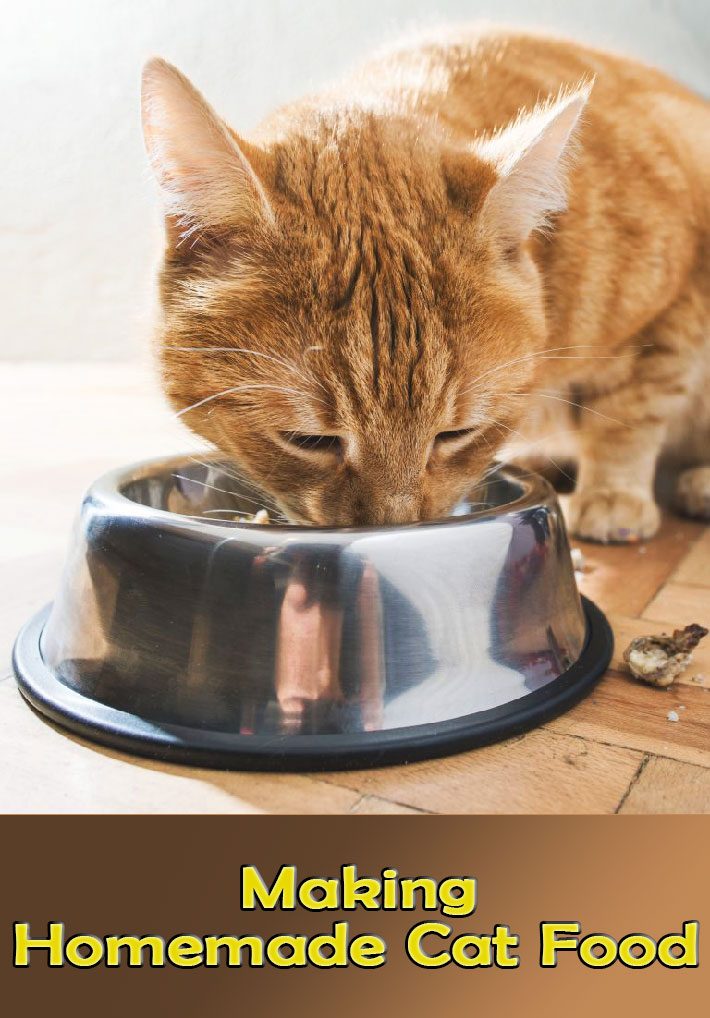
These days, there’s a good chance the content of your cat’s bowl has been mass-produced by a multinational company, like Purina. But factories are often located in countries with limited controls — even for products intended for human consumption. As a result, many people are returning to the basics for their pets.
If you would like to surprise your kitty with a wonderful treat — or even transition entirely to homemade cat food — consider these guidelines, recipes and resources as a starting point.
Ingredients to avoid
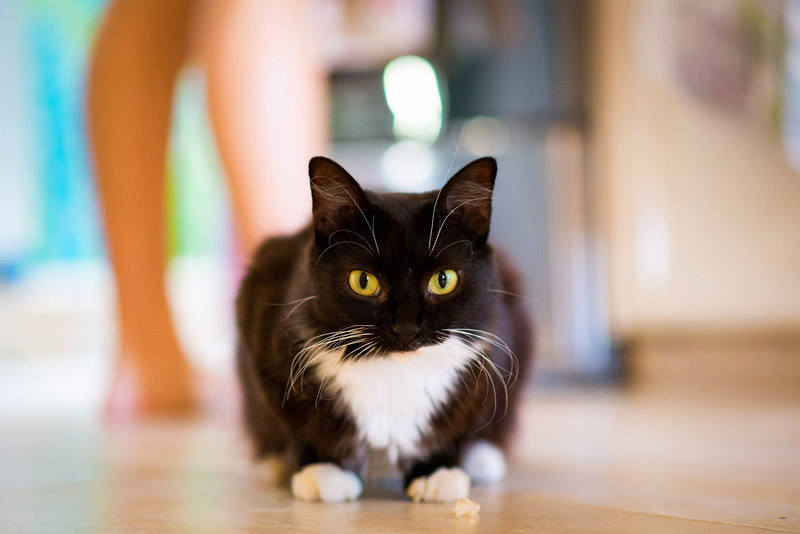
As tasty as a chocolate-covered mouse may sound, this is definitely a no-no for kitty. Chocolate generally aggravates the tummies of many animal companions, not just cats. Some other ingredients to avoid in homemade cat food include:
- Garlic
- Onions
- Raisins
- Raw egg whites
- Tomatoes
- Grapes
While the above ingredients should be avoided, any regular cat food diet must also include a number of ingredients — especially animal protein.
You may be completely healthy as a vegan, but your cat certainly will not thrive on a diet of tempeh and tofu!
Your cat is a carnivore and there is no way around this evolutionary fact. Cats need between 60 and 80 percent meat protein to acquire enough essential amino acids, including taurine, arginine, lysine and cysteine. Not getting enough taurine, for example, will make your kitty blind.
The essentials
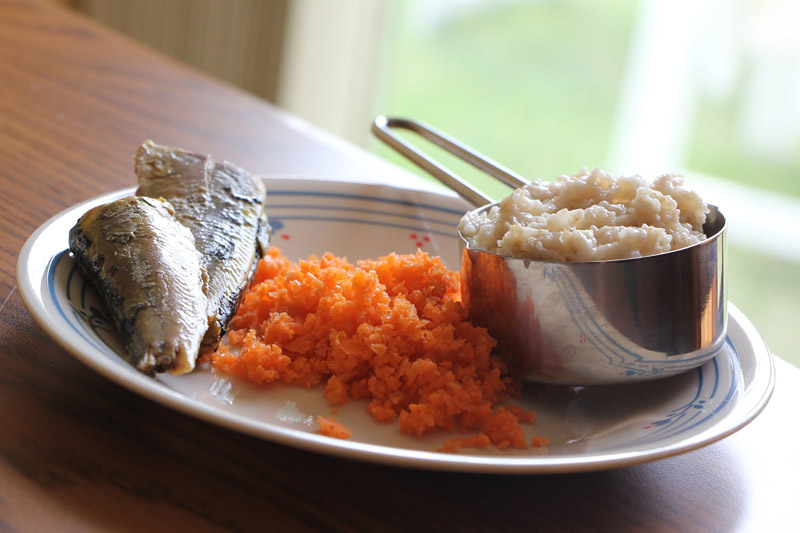
Animal protein:
The protein in your cat’s diet should come from chicken — or other poultry — beef, pork, rabbit, fish or liver. Liver is especially important because it is chock-full of vitamin A, and cats cannot produce this vitamin on their own. Variety is critical, so you should not exclusively feed your cat liver or fish on a daily basis.
Animal fats:
Not only does animal fat make food tastier for your cat, but this essential ingredients is also mandatory for healthy skin and fur, as well the circulatory and urinary systems. Kittens need about 35 percent fat, while adult cats thrive on a diet of about 30 percent fat.
Calcium to phosphorus ratio:
The ratio between calcium and phosphorus should be 1 part calcium to to 1.3 parts phosphorus. The easiest way to accomplish this ratio is to add calcium supplements.
Commercial cat food usually uses bone meal. If you choose to use bone meal, only use a product meant for human consumption, not one intended for gardening. Veterinarian Dr. Pierson grinds up bone herself and says it is much easier than it sounds.
Water:
Homemade cat food will ideally be 10 percent to 30 percent water weight.
Carbs:
All good recipes for felines should contain less than 10 percent carbohydrates.
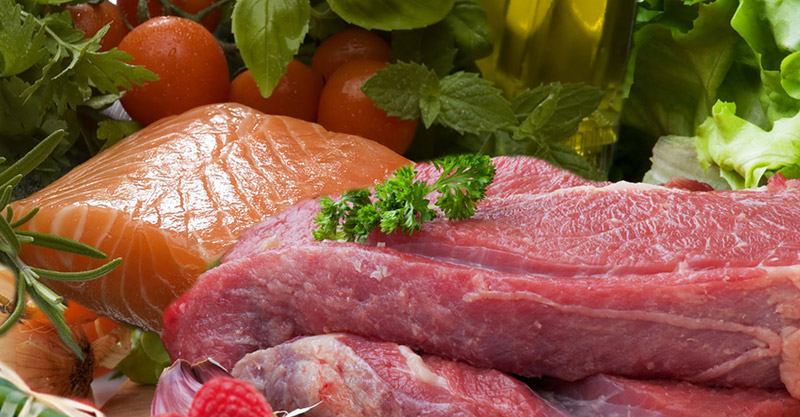
Homemade Cat Food Recipes to Try
Basic Cat Food
- 1/4 teaspoon olive oil or salmon oil
- 2.7 grams of feline vitamin/mineral supplement
- 30 grams of potato, cooked without skin
- 5 grams of carbohydrates — choose one: cooked pasta, white rice, barley, oatmeal or peas
- 83 grams of cooked animal protein, such as whole meat chicken, lamb, rabbit, beef, pork, tuna or salmon
Mix all of the ingredients together — a blender works really well for this purpose — and store the food in the fridge until needed.
Tuna Patties
- 1 can tuna
- 1/2 cup boiled rice
- 1/4 cup pureed liver
- 2-3 sprigs parsley chopped
Drain the tuna and mix all ingredients together. Make six to seven balls and then form them into patties. Store in the fridge, and serve to your cat. This is one cat treat recipe that your feline friend won’t be finicky about!
Rabbit Stew
This meal is also good enough for human consumption, so feel free to get out two plates!
- Rabbit meat — wild or domestic — boned and cut into small pieces
- A little olive oil
- A few springs of parsley, rosemary, marjoram and thyme
- Vegetable stock — unsalted, so best home-prepared
- Sweet potato, carrot, celery, leek, turnip and peas
Sautée the rabbit chunks in olive oil. Sprinkle with herbs. Add the stock water, and bring to a boil. Cover with lid and place in a medium to low oven until cooked through. Add the chopped vegetables and return to the oven for a another 45 minutes. Let cool, then dish out to your cat.
Salmon Delight
- 1 can salmon — or fresh salmon
- 1 tablespoon cooked, mashed broccoli
- 1/4 cup whole wheat bread crumbs
- 1 teaspoon brewer’s yeast
Combine all ingredients in a bowl. Stir together and serve. Keep any leftovers refrigerated, and discard after three days.
Sardine Treat
- 1 can sardines in oil
- 2 tablespoons of grated carrot
- 1/3 cup cooked oatmeal
Combine all ingredients in a bowl. Mash together and serve. Store leftovers in the refrigerator, and discard after three days.
Bon appetit!
If you decide to provide homemade cat food to your cat as its primary diet, you must do it right or not do it at all. It is not difficult to make cat food, but you must do your homework. Make sure you don’t add or omit ingredients from a balanced vet-recommended recipe.
Of course, if you are providing a supplemental treat or just an occasional meal alongside a commercial food diet, there is less concern about not achieving the proper balance of nutrients.

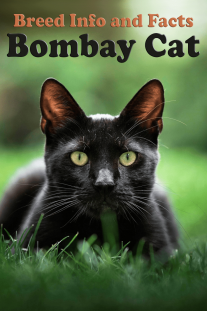
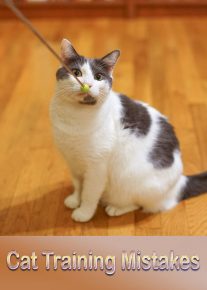
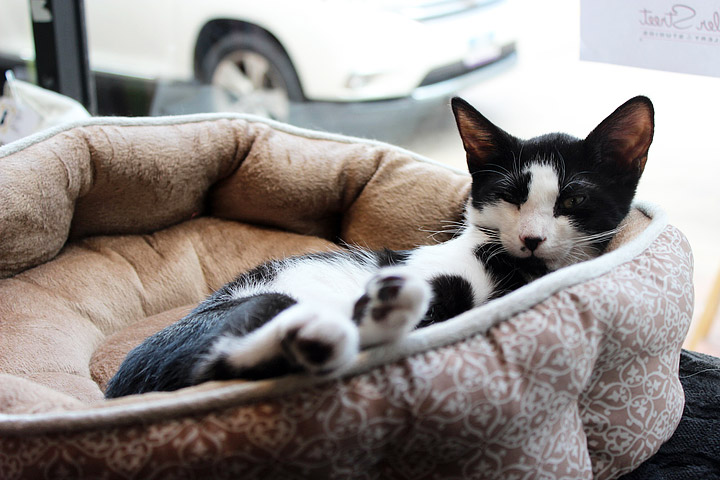
One ingredient that is missing is taurine. Cats need this and it can easily be provided by adding chicken heart to any of the recipes. Also beware of too much tuna for the same reasons humans should not eat too much tuna, Mercury poisoning.
No .. this is so wrong !!! You are not allowed to change a cats diet regularly !! They have problems with it.
No, no and no. Csys are obligate carnivores. They do not process carbs – starches or veggies (or fruit) wrll, in fact these can be digestive irritants. Please visit catcentric.org for a good introduction into cat nutrition. Another good website is catinfo.org
This article makes no sense. It states that cat food should have 10% or less of carbohydrates, yet the very first recipe is nearly 50% carbohydrates (80 g vs 83 g protein).
It’s a typo, 5 grams is right value. Thanks for your input Firstlight.
Most people that have cats know that daily changes are no good for the cats indigestible system ,
In fact cat diets should remain boringly the same from day to day .
Their insides do not cope with change.
This article is nice in principle, well written but sadly not the best researched. Having had a cat with dry-food induced diabetes that was kicked into remission using a combination of insulin, canned cat food, plus a dash of blood, sweat, and tears I feel more than qualified to discuss cat dietary needs. Cats are absolutely obligate carnivores and your cheap Friskies pate (NOT the shreds or anything with gravy) is waaaay better than any carb-laden dry food. The best food for your cat is always one that he will actually eat, and I’m not against homemade diets, but ditch the carbs. Cats can chew on cat-grass, but keep wheat, grains, veggies out of their diets.
Hi there , totally agree with the ladies above .
My cat has kidney disease and I have a problem with her food .
She has to have the correct biscuits for kidney disease and has boiled chicken every other day mainly because she has always had it whilst with me and because I don’t trust anything else .
Sherie .. cats protection volounteer
Hi there all. I too know first hand what dry food WILL do. My cat developed pancreatitis from it. My vet put him on a dietary medical dry food only for him to gain weight. Nope, no good. So I did some reserch and began making his food. This didn’t fare well tho. But he does eat the can stuff. So now I mix my home made with the can food. And yes, no grains. When have you ever seen a cat in the wild eat vegies? So, NO vegies please. Lots of protein, fats and even some tlc.
I have a question, I started making my cats food last year. Since then they do not have fleas. I stopped doing the drops in May 2018. Have you noticed this also?